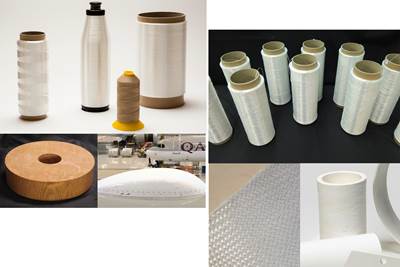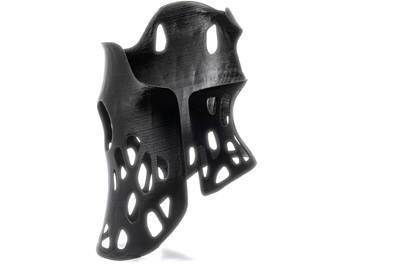Reinforce3D’s continuous fiber injection process (CFIP) is a post-processing step for injecting continuous carbon fiber and resin into hollow cavities in a finished part (bottom). An example use case is the automotive brake pedal demonstrator (top), which is made from a transparent, 3D printed polymer reinforced with injected, continuous carbon fiber/epoxy. Source (All Images) | Reinforce3D
The additive manufacturing (AM) landscape for composites — using both discontinuous and continuous fibers — continues to evolve. Startup Reinforce3D (Tarragona, Spain) is approaching the market from a unique direction, with a technology for injecting continuous fibers into hollow, 3D printed components as an alternative to printing directly with them.
The company was founded in 2022, but development of what would become the company’s continuous fiber injection process (CFIP) technology began in 2013 by a team at Barcelona-based research organization Eurecat led by Marc Crescenti, who is now Reinforce3D’s co-founder and CTO.
“Marc has a background in composites and had done a lot of work studying the use of continuous carbon fibers in additive manufacturing,” explains Blanca Garro, Reinforce3D CEO. “One of the problems is that with additive manufacturing, you have to add material layer by layer, which is difficult to do with continuous fibers and [also] get the properties you want. Many methods use short fibers instead because they’re easier to layer, or there’s a post-processing method involved. But what if the part requires continuous fiber reinforcement not back and forth, layer on layer, but in all directions within the part?”
Crescenti and his team sought to find a solution for reinforcing 3D printed components with continuous fiber reinforcement, and ultimately created the technology that would be commercialized as CFIP.
In January 2022, thanks to investment from BeAble Capital, the company Reinforce3D was founded to commercialize this technology. Garro, who came on board as CEO in 2023 with a background in the AM industry, says the first steps for the new company were to demonstrate the mechanical and lightweighting performance of CFIP, to define and develop commercial products and to generate additional patents.
The CFIP process
The CFIP machine includes a manual or robotic injection head programmed to inject specially treated fibers and liquid resin via designed fiber trajectories.
CFIP, which won a JEC Innovation Award in 2020, is a post-processing step for reinforcing a hollow, typically 3D printed part that could be made from a variety of materials — composites, ceramics, unreinforced polymer or metal. Garro notes that while designed initially to complement AM, CFIP could be used to reinforce any hollow part, such as a pultruded profile.
First, the completed hollow part must be inspected, and the cavities cleared of any debris. Then, the programmable CFIP injection head — which is either moved by hand in the first commercial version, or mounted on a robotic arm in the future version in development — feeds continuous carbon fiber and liquid resin into each hollow cavity.
Currently, the process is compatible with a range of industrial-grade carbon fibers 4-8 millimeters in diameter — supplied by Reinforce3D, as the fibers have to first be treated with the company’s proprietary treatment process. A large range of thermoset, thermoplastic or bio-based resins could be used, limited only by the viscosity range compatible with the system, though most applications so far have used epoxy. Garro notes that the company plans to expand its future offerings to include glass, aramid and natural fiber options.
After injection — a process that Garro says takes only minutes — the part is then cured, either at room temperature or in an oven, depending on the specifications of the resin used and the temperature requirements of the application.
How do the exterior materials and interior injected composite react to one another? Garro explains that the company has evaluated and characterized a range of materials, studying the interface between the interior composite and exterior part. “There is both a chemical and physical reaction between any two materials combined in this way, so we’ve really worked to characterize this interface so we can consider their properties in the design process.” The company is also able to conduct simulations and tests with new materials that customers may want to use, particularly for higher performance parts such as aerospace components.
Designing injection trajectories
The key to CFIP is designing “trajectories” for the fibers, to ensure optimized material volume and fiber placement are realized where needed to meet the part’s strength requirements.
“We need to find a balance of how many fibers to use to get the needed properties while achieving a cost-effective solution in order to reach real business cases,” Garro explains.
Currently, Reinforce3D offers consulting services, working with customers to simulate and optimize trajectories based on part design. A physical prototype may then be built and tested to validate the simulated models.
At the same time, the company is also working on several software solutions that will be available to help customers design parts and injection trajectories themselves. The first will be a tool for checking the design of fiber trajectories before injection. “If a customer uses their own software to design the fiber trajectories, then they can upload the file into the checker and it’ll validate whether or not the design will work with the process or if anything needs to be changed,” Garro says.
Benefits: Light weight, optimized strength, integral joining
“We make applications possible that might not be otherwise,” Garro says. CFIP is said to enable lightweight parts with complex and curved shapes, optimized for high strength properties where they are needed. The integration of continuous carbon fiber as a reinforcing material often means the exterior component can be made with less material, potentially reducing overall part weight, or with less expensive material — for example, switching from a higher strength aluminum 3D printed component to a more cost-effective polymer.
In addition, CFIP can be thought of as a joining technology, Garro says. “In 3D printing, you are limited by your printing chamber’s dimensions. Here, we can use this technology to join multiple 3D printed components with one reinforcement all the way through, enabling the efficient manufacturing of large structures. It’s much stronger than adhesive bonding.”
While true that an adhesive or a fixture must be used first to align the different components before injection, the interior composite, once cured, acts as an interior joining mechanism. “It’s like a spine connecting the parts of the body together from inside,” Garro says. “This technology enables larger reinforced parts than what you can usually make with 3D printing, because you can print each piece separately and then reinforce them together.”
Reinforce3D has a physical testing laboratory to test prototype parts to breaking — particularly important for larger parts that are integrally joined using this technology. Although, Garro notes, “When we test parts to breaking, they never break at the joints, as you would expect if the part was only bonded or fastened.”
Furthermore, while the process was designed originally for use with 3D printing, it could also be used with other processes. For example, fibers could be injected into hollow composite parts made via pultrusion or filament winding if extra reinforcement was needed in that direction, or injected onto polymer or composite parts made from traditional methods like extrusion or injection molding. Regarding the latter, Garro explains that “this is newer for us, but we are starting to study multi-material parts, and injecting our fibers into polymer molds or onto already finished parts. It’s been a very interesting development so far.”
Applications across end markets
According to Garro, CFIP has been used in a variety of prototype and R&D projects in a range of industries, including projects for Airbus (Munich, Germany), marine defense manufacturer Navantia (Madrid, Spain) and tooling for automotive manufacturer SEAT (Barcelona, Spain).
There has also been a lot of commercial interest in sporting goods equipment, especially for high-performance bicycle frame components, but also other types of equipment and elite sports shoes, such as shell and cuff components for Dalbello (Treviso, Italy) ski boots.
Looking ahead, Garro sees opportunities in applications such as interior aircraft brackets, spacecraft and antenna components, automotive brakes and components for race vehicles, fixtures and robotic arm components.
In-house demonstrator: Satellite antenna support prototype
To demonstrate the uses of its technology for customers, Reinforce3D has produced several demonstrators including a satellite antenna support based on a case study design published in 2015 by space equipment manufacturer RUAG Space (which has since changed its name to Beyond Gravity, Zurich, Switzerland).
The original design was for a small support and bracket, measuring 385 millimeters tall × 345 millimeters long, made from 3D printed aluminum and weighing about 950 grams (a reduction from the previous 1.6-kilogram machined metal version). The Reinforce3D team used finite element simulations and its own topology optimization to determine how to integrate CFIP technology to reduce the part weight even further while maintaining the same strength, stiffness and vibration requirements.
This satellite support demonstrator combines 3D printed PA12 (darker, top left portion of the part) and aluminum (bottom right) parts, joined in the interior with continuous carbon fiber and epoxy. Black-colored fixtures serve to keep the exterior components aligned during injection.
Ultimately, a demonstrator was made: The 3D printed outer component was printed in two pieces, one made from aluminum alloy using selective laser melting (SLM) — similar to the original RUAG case study component — and the other made from polyamide 12 (PA12) using MultiJet Fusion (MJF). These two pieces were aligned with external fixtures and then injected with carbon fiber/epoxy using the CFIP system.
The results? The CFIP-enhanced component was mechanically tested and proven to meet the original mechanical requirements while only weighing 484.4 grams — a reduction of 48% compared to the 3D printed aluminum version and a 70% decrease compared to the original machined metal version. The use of reinforcing carbon fiber also enabled them to remove some of the costlier printed aluminum, which reduced material costs.
According to Garro, this prototype serves as an example of how CFIP technology can help reduce weight and costs while maintaining performance, and how it can be used as a joining technology to connect not only two separately printed pieces but two pieces made from different materials.
Next steps toward commercialization
Today, Garro says the young company is working on readying its technology for commercial production. The business model will be two-fold: Reinforce3D currently provides consulting services to companies interested in this technology, and can design and manufacture prototype parts with its in-house system. In the future, the company will also sell machines and spools of treated carbon fibers directly to customers like 3D printing service providers, manufacturers of composite structures or end users. The company will continue providing consultancy services, especially for customers looking for uses with new materials or with complex part requirements.
“Right now, we’re in talks with fiber suppliers to solidify our partnerships for materials supply. We’re working with 3D printing service providers like Materialise [Leuven, Belgium], to optimize the process for use by customers. And we’re doing a variety of consulting projects with customers in various end markets.”
Reinforce3D plans for machines to be delivered by the end of 2024 to early adopters of the technology including those it has worked with on prototypes and R&D projects, and then for the product to launch publicly in 2025.
Garro adds, “We’ve proven this technology is able to significantly reduce weight and maintain or even increase performance — and not by reinventing how they’re manufactured, but by reinforcing in a new way parts that are already there. We’re excited to really see this take off in new directions.”
Related Content
Materials & Processes: Fabrication methods
There are numerous methods for fabricating composite components. Selection of a method for a particular part, therefore, will depend on the materials, the part design and end-use or application. Here's a guide to selection.
Read MorePlant tour: Spirit AeroSystems, Belfast, Northern Ireland, U.K.
Purpose-built facility employs resin transfer infusion (RTI) and assembly technology to manufacture today’s composite A220 wings, and prepares for future new programs and production ramp-ups.
Read MoreManufacturing the MFFD thermoplastic composite fuselage
Demonstrator’s upper, lower shells and assembly prove materials and new processes for lighter, cheaper and more sustainable high-rate future aircraft.
Read MoreA new era for ceramic matrix composites
CMC is expanding, with new fiber production in Europe, faster processes and higher temperature materials enabling applications for industry, hypersonics and New Space.
Read MoreRead Next
The future of quartz and oxide fibers at Saint-Gobain Advanced Ceramic Composites
New business builds on 100-year legacy in quartz, prepares for growth, while starting production of oxide fibers to meet increased demand for CMC by aerospace and industrial sectors.
Read MoreMulti-material, self-sensing, 3D-printed scoliosis braces
Startup Fited and Brightlands Materials Center have developed a lighter weight, thinner CFRP corrective brace, including pressure sensors made from continuous carbon fibers.
Read MoreThe next evolution in AFP
Automated fiber placement develops into more compact, flexible, modular and digitized systems with multi-material and process capabilities.
Read More

.jpg;width=70;height=70;mode=crop)
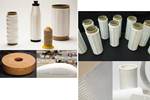
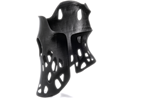
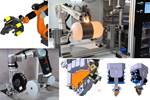











.jpg;maxWidth=300;quality=90)







